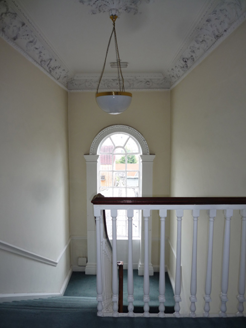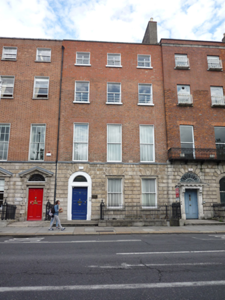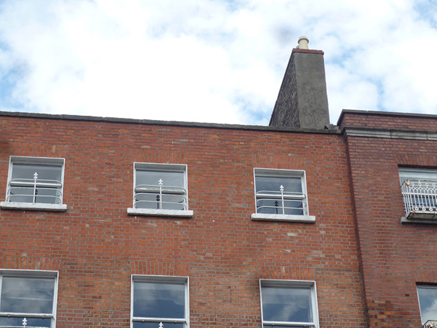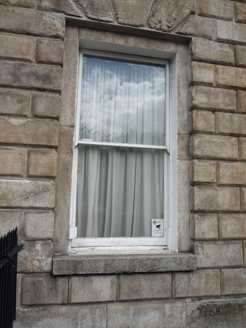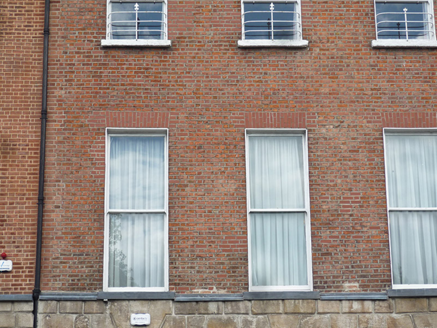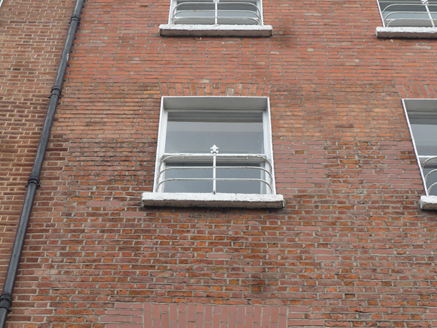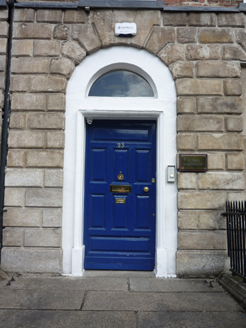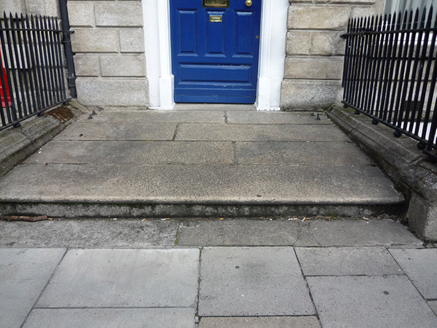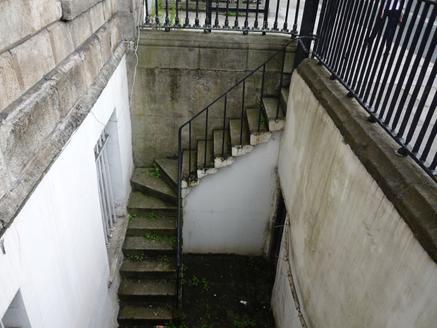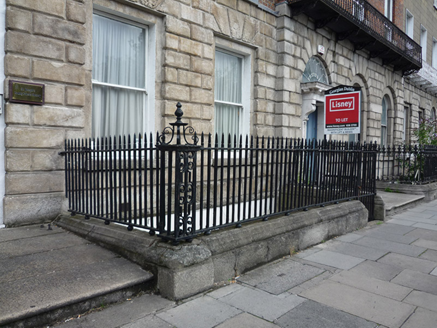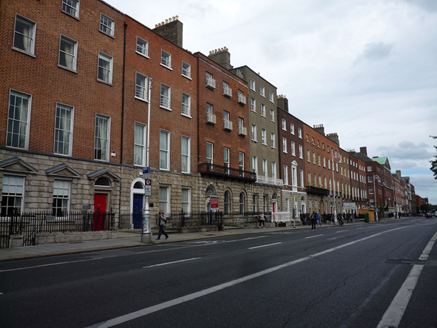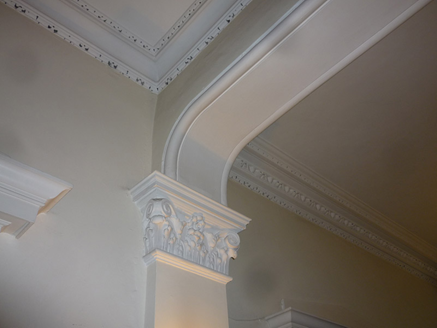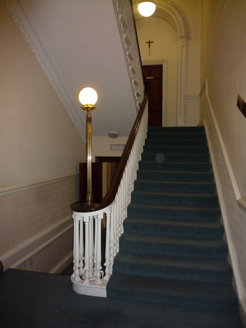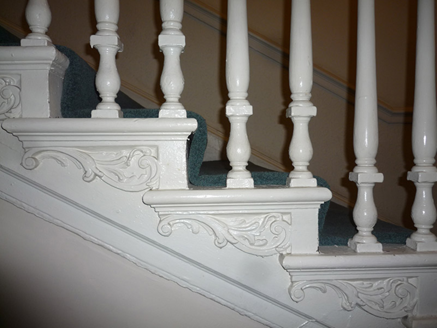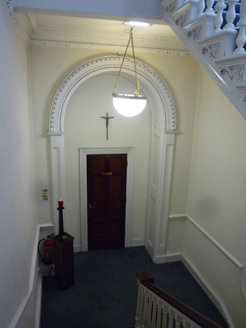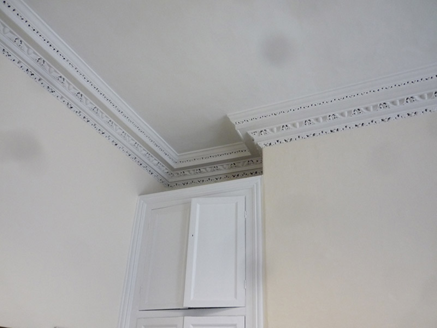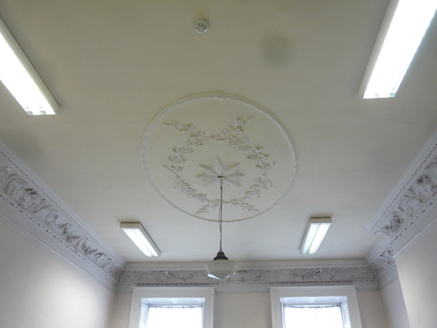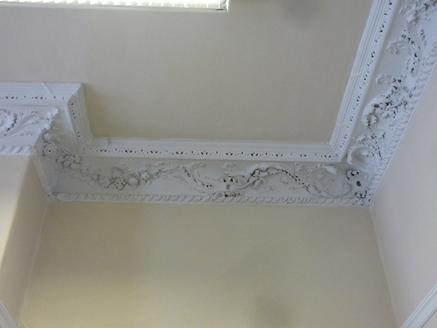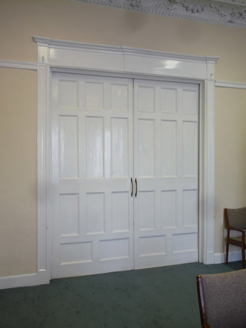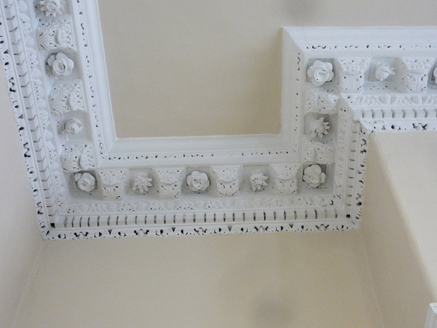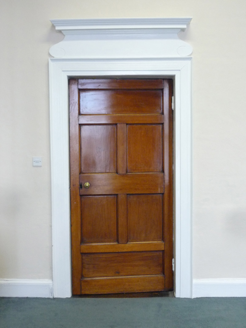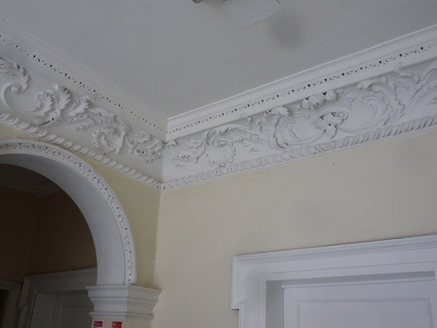Survey Data
Reg No
50100370
Rating
Regional
Categories of Special Interest
Architectural, Artistic
Original Use
House
In Use As
Office
Date
1760 - 1770
Coordinates
316761, 233629
Date Recorded
29/07/2016
Date Updated
--/--/--
Description
Attached three-bay four-storey former house over basement, built c. 1765, with three-storey four by single-bay return to rear. Now in office use. Pitched natural slate roof to front part, behind masonry coping; rendered parapet to rear; rear part has hipped roof to west, shared with No. 24, and hipped roof to east. Chimneystacks with clay pots to east party wall. Concealed gutters and replacement cast-iron downpipes. Hipped and pitched slate roof to return. Flemish bond red brick walling, rebuilt to front from middle of second floor upwards, over channel-rusticated granite ground floor walling on splayed granite plinth over painted rendered basement walling; rendered walling to rear and to return. Square-headed window openings, diminishing in height to upper floors, with painted rendered reveals, painted granite sills and timber sliding sash windows with horns, six-over-six pane to basement with wrought-iron bars, one-over-one pane to floors above, with wrought-iron guard-rails to top two floors. Rear has timber sash windows, three-over-three pane to top floor, six-over-six pane to second floor, nine-over-six pane round-headed stairs window; openings to lower floors blocked up. Return has six-over-six pane timber sash windows, bipartite to south end. Round-headed recessed doorcase having painted rendered surrounds, ovolo-moulded reveals, plain fanlight and eight-panel raised-and-fielded timber door with weatherboard and brass furniture. Door opens onto granite platform bridging basement, boot-scrapes removed, and single step to street level. Basement area enclosed by wrought-iron railings with decorative wrought and cast-iron corner posts on moulded granite plinth. Separate entrance provides access to original quarter-turn granite staircase with winders and wrought-iron handrail. Timber panelled and glazed door provides internal access below bridged platform. Entrance and stairs hall divided by recent mahogany glazed frame with double-leaf door. Stairs hall has delicate ceiling cornice and rose and herringbone clay tiled flooring, timber dog-leg staircase with two fine turned balusters to each tread, moulded tread ends and carved ramped mahogany handrail. Internal doors generally reeded, with cornices above; first floor rooms have delicate cornices, panelled window aprons and shutters, with oval stucco detailing to rear room ceiling; principal front room to ground floor has intricately carved timber chimneypiece; both principal rooms at first floor have marble chimneypieces. carparking to rear, with rendered concrete block wall to boundary.
Appraisal
No. 23 Merrion Square was built as part of the original development of the Georgian square. The north side of the square is set apart, as the majority of houses have granite rustication to the ground floor. Completed about 1765, It was built by Ralph Ward as one of a group of three with nos. 24 and 25. The relative plainness of the well-balanced façade is relieved by the granite facing of the ground floor. The interior is embellished by fine Rococo plasterwork to the interior ceilings and cornices and good joinery. Laid out as part of the Fitzwilliam Estate, Merrion Square is one of the best-preserved Georgian streetscapes in Ireland. The north, east and south sides of the square are lined with terraced houses of eighteenth and nineteenth-century date while the west side is terminated by the garden front of Leinster House. The houses maintain a relatively uniform building height and design, attributed to standards promoted in Fitzwilliam's leases. Individuality was introduced through the design of doorcases, window ironwork and interior decorative schemes.
